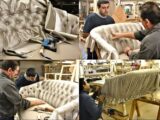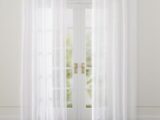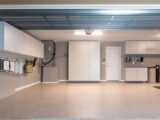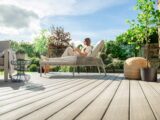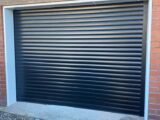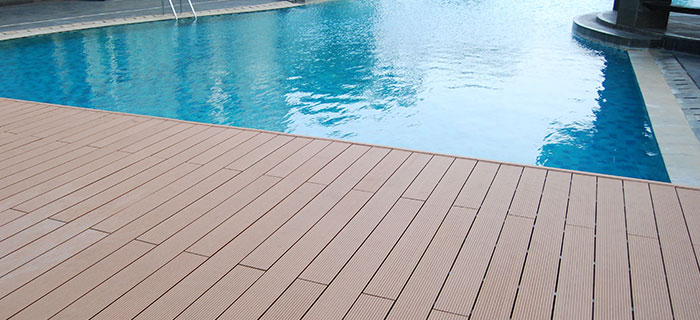
WPC Flooring vs. Traditional Hardwood: Which is the Better Investment for Your Home?
April 13, 2025When it comes to flooring, choosing the right material for your home can be a daunting decision. Two popular options that often come up in discussions are WPC flooring dubai and traditional hardwood flooring. Both are durable, attractive, and highly sought after for their timeless appeal, but each has its own set of advantages and considerations that can affect your decision-making process.
In this article, we’ll compare WPC flooring and traditional hardwood, evaluating their performance, cost-effectiveness, aesthetics, and more, to help you determine which one is the better investment for your home.
What is WPC Flooring?
WPC flooring is a type of engineered flooring made from a blend of wood fibers and plastic polymers. This fusion creates a durable material that offers the beauty of wood with enhanced resilience. WPC flooring is often referred to as “waterproof” because it is highly resistant to moisture, which makes it ideal for areas like kitchens, bathrooms, and basements.
Unlike traditional hardwood, WPC is designed to be more flexible and less prone to warping when exposed to water or humidity. It comes in planks that interlock for easy installation, often with a click-lock system, making it a favorite for DIY homeowners.
What is Traditional Hardwood Flooring?
Traditional hardwood flooring is exactly what it sounds like: solid wood planks cut from various tree species, including oak, maple, cherry, and walnut. Hardwood floors have been a staple in homes for centuries, valued for their timeless appeal, natural look, and long lifespan. Unlike WPC, hardwood floors require more maintenance, including refinishing and sealing, to maintain their beauty over time.
Hardwood flooring offers a rich, authentic feel and is seen by many as a symbol of luxury and sophistication. It’s ideal for areas that experience less moisture but excels in living rooms, dining rooms, and bedrooms.
Durability and Performance
One of the most critical factors when choosing a flooring material is how well it stands up to wear and tear over time.
- WPC Flooring: WPC is incredibly durable and designed to handle high foot traffic, moisture, and spills. The waterproof core of WPC flooring prevents warping, swelling, or cracking, even in high-humidity environments like bathrooms or kitchens. The surface layer is also resistant to scratches, stains, and fading, making it a great choice for homes with children, pets, or heavy foot traffic.
- Traditional Hardwood: While hardwood flooring is undoubtedly durable, it is more vulnerable to moisture and humidity. Wood can expand, contract, or warp if exposed to excessive moisture, which makes it less ideal for bathrooms or basements. Hardwood is also more prone to scratches, dents, and scuff marks, especially in high-traffic areas. Although refinishing can restore its beauty, the process can be costly and time-consuming.
Verdict: If you’re looking for a low-maintenance, moisture-resistant option, WPC flooring takes the edge. However, if you prioritize the natural look of wood and are prepared for a bit of upkeep, traditional hardwood could still be a great choice.
Aesthetics and Appearance
Both WPC and traditional hardwood offer attractive visual appeal, but they have different aesthetics.
- WPC Flooring: Modern WPC flooring comes in a wide variety of colors, styles, and textures. It can mimic the look of natural wood, stone, or tile, offering a wide range of design options. Thanks to advanced printing technology, WPC can look just as realistic as hardwood but with a more diverse selection of finishes and patterns. It also offers more versatility when it comes to achieving specific looks, such as rustic, modern, or contemporary.
- Traditional Hardwood: There’s something timeless and elegant about real wood. The unique grains and natural imperfections in hardwood create a one-of-a-kind floor that many homeowners appreciate. It ages beautifully over time, developing a patina that can add character to your home. While hardwood is available in different stains and finishes, it doesn’t offer the same level of flexibility in design that WPC can.
Verdict: If you’re after the genuine look of natural wood and don’t mind a little maintenance, hardwood flooring has the edge. However, for those who want a customizable, moisture-resistant option, WPC is an excellent alternative.
Cost
Cost is a significant factor for most homeowners when selecting a flooring option.
- WPC Flooring: WPC is generally more affordable than hardwood, both in terms of material cost and installation. WPC flooring prices can vary depending on the brand, thickness, and style, but it typically falls within a mid-range price bracket. Additionally, because WPC is easier to install with its click-lock system, you can save money on professional installation costs.
- Traditional Hardwood: Hardwood flooring tends to be more expensive, both in terms of material and installation. The cost of solid hardwood can range significantly depending on the species of wood, with exotic hardwoods costing considerably more than domestic varieties. Furthermore, professional installation is often required, which can add to the overall expense. Additionally, hardwood floors require ongoing maintenance, including refinishing every few years, which can incur additional costs.
Verdict: WPC flooring is typically the more budget-friendly option. If cost is a major consideration, WPC provides an excellent balance between affordability and performance. Hardwood, while more expensive upfront, can add significant long-term value to your home if properly maintained.
Maintenance and Upkeep
- WPC Flooring: One of the standout features of WPC flooring is its low-maintenance nature. Regular cleaning with a damp mop and occasional sweeping is usually sufficient to keep it looking its best. Since WPC is resistant to stains, scratches, and fading, it doesn’t require refinishing or sealing like hardwood does. This makes it a great choice for busy households.
- Traditional Hardwood: Hardwood requires more maintenance over time. While it can be refinished to restore its appearance, this process can be costly and labor-intensive. Additionally, hardwood floors need to be periodically sealed to protect against moisture, and it can be prone to scratches, dents, and other signs of wear. Regular cleaning with specific wood-care products is necessary to maintain its look.
Verdict: For ease of maintenance, WPC flooring is the clear winner. Hardwood’s need for refinishing and sealing makes it a higher-maintenance option.
Conclusion: Which is the Better Investment?
WPC flooring dubai and traditional hardwood ultimately depends on your specific needs, preferences, and budget.
- If you value a durable, moisture-resistant, and low-maintenance flooring solution, WPC flooring might be the better investment for your home. It offers versatility in design, is easier to install, and comes at a more affordable price point.
- On the other hand, if you’re willing to invest in long-term upkeep and prefer the authentic, timeless beauty of wood, traditional hardwood remains an elegant and lasting choice.
Ultimately, both flooring options have their merits. The best investment for your home comes down to the space, your lifestyle, and how much maintenance you’re willing to commit to. Consider your needs, do some research, and choose the flooring that works best for you.


